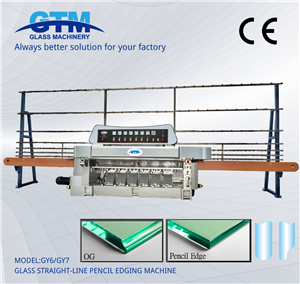Navigating the Clear Choice: A Guide to Digital Screen Glass Technology
In the era of digital transformation, screens have become our windows to the virtual world. They are vital for smartphones, tablets, laptops, televisions, and numerous other devices that require clear, durable, and responsive interfaces. But what makes the glass on these digital screens so special? Let’s delve into the science and technology behind digital screen glass that makes our modern gadgets possible.
Composition: What's in a Screen?
Most digital screens are made from a type of glass known as alkali-aluminosilicate sheet glass. This glass is specially formulated for electronic displays because of its high resistance to scratches and thermal shock. It consists of a thin, durable layer which is produced by floating molten glass on a bed of molten metal to achieve a uniform thickness and a smooth surface.
The Strength of Glass: Understanding Toughness
One key feature of digital screen glass is its strength, which is accomplished through a process called 'ion exchange'. Here, smaller sodium ions in the glass surface are replaced with larger potassium ions, creating a state of compression. This compression makes the glass much harder to crack or scratch, hence why you often hear terms like 'gorilla glass' that tout their robustness in the face of daily wear and tear.
Clarity and Touch Sensitivity
Aside from strength, the glass must offer exceptional clarity and touch sensitivity. To achieve this, screen glass comes with an oleophobic coating that resists fingerprints and smudges, ensuring clear visibility even under direct light. Additionally, conductive coatings enable capacitive touch functions, which are essential for the touchscreen capability that we’ve all come to rely on.
Anti-Reflective and Anti-Glare Technologies
Modern technological advancements have introduced anti-reflective and anti-glare coatings that reduce reflections and improve viewability from various angles, which is particularly important in outdoor or brightly lit settings. These coatings are engineered on a microscopic level to scatter and absorb light, permitting users to enjoy their devices without the interference of reflection and glare.
Tempering: Safety First
Safety is another important aspect, and that's where tempered glass comes into play. It’s treated with controlled chemical and thermal processes to increase its strength. In the event of breakage, tempered glass shatters into small granules instead of jagged shards, reducing the risk of injury.
Looking Ahead: The Future of Screen Glass
The evolution of digital screen glass technology is far from over. Innovations like flexible glass for foldable devices and electrochromic glass, which can change transparency with an electric current, are on the horizon. These technological marvels promise to further revolutionize how we interact with our devices.
In our day-to-day life, we may not ponder the sophisticated engineering that goes into our digital screens, yet it’s this very technology that empowers us to connect, work, and play. As the demand for more advanced devices grows, the science behind screen glass will continue to evolve, offering clearer, stronger, and smarter glass for the digital screens of tomorrow.
Conclusion
Understanding the technologies behind digital screen glass gives us an appreciation for these marvels of modern engineering. By delving into the intricacies of this technology, we realize that the glass is not just a protective layer, but an integral component that defines the quality and functionality of our most-used devices.




